You are viewing ARCHIVED content published online before January 20, 2025. Please note that this content is NOT UPDATED, and links may not work. Additionally, any previously issued diversity, equity, inclusion or gender-related guidance on this webpage should be considered rescinded. For current information, visit https://www.blm.gov/blog.
Removing barriers to recreation on public lands
There’s something special about being on public land with family around a campfire, or fishing off a public dock, or experiencing the breathtaking views from a public wayside. Everyone, including those with disabilities, deserves the right to experience their public lands free from barriers to access. That’s why the Bureau of Land Management is working hard to ensure its recreation sites have accessible parking, toilets, and picnic tables; that its campground surfaces, boat ramps, and other areas can accommodate wheelchair users; and that its signage includes accessible information, such as whether service dogs are allowed.
“It is imperative for the Bureau to improve accessibility on public lands,” says Tom Heinlein, BLM Assistant Director of National Conservation Lands and Community Partnerships. “Inclusiveness and equity go hand in hand with ‘recreation for all,’ one of the strategic pillars for the agency’s 21st Century Blueprint for Outdoor Recreation.”
Our nation’s efforts at accessibility began more than 50 years ago. In 1968, a group of people with disabilities—people who were historically marginalized and excluded—successfully led an effort to get a law passed with unanimous support of both Houses of Congress. This law, known as the Architectural Barriers Act, was among the first to address universal access to federal and federally leased facilities.
This law is the reason there are ramps and elevators where there were previously only stairs, restrooms that can be used by people in wheelchairs, and curb cuts. These features not only help people with mobility devices, but also parents pushing strollers.
Five years later, the Rehabilitation Act of 1973 was passed. It created the U.S. Access Board, which was charged with developing ABA Accessibility Standards. These include specifications for parking, signs, ramps, elevators, restrooms, and assistive listening systems.
The ABA Standards also cover outdoor recreation facilities that are constructed or altered with federal funds, such as fishing piers, boat docks and ramps, picnic tables, camping areas, viewing areas, and trailheads.
An Accessible BLM
BLM has been working hard to provide better information on the accessibility of recreation sites for our visitors to public lands with disabilities. We created an Accessible Recreation Opportunities Map that features photos and descriptions of accessible features, including parking, restroom facilities, picnic tables, interpretive signs, boat ramps, and scenic overlooks to BLM web pages - called visit pages. These web pages provide information on which sites would be compatible with visitors’ abilities and preferences.
So far, BLM Utah has added more sites to the map than any other state. Evan Glenn, Recreation Program Lead for Utah, explained, “We have many amazing recreation sites in Utah that offer accessibility features so we want to highlight as many as we can.”
Utah is well known for its spectacular rock formations, rich cultural history, many National Parks and Monuments, and abundance of outdoor recreation opportunities, including hiking, biking, boating, camping, and sightseeing. The BLM is working to bring recognition to its recreation sites that are accessible to people with different abilities.
Jeremy Dyer, Public Affairs Specialist with the BLM Utah State Office, stated, “One of the joys of my job is the opportunity to go out to these amazing sites and photograph the areas, not only for the beauty, but to provide photos of the accessible features at these sites so the public knows what to expect when they visit their public lands.”
Be sure to check out BLM’s accessible sites in Utah, described below!
BLM Utah’s Accessible Locations
BLM Utah has much to offer for visitors with disabilities and they keep striving to do more. Last year they improved the “C” Overlook with paving, fencing, and seating so it is more accessible. This impressive overlook, just east of Cedar City, has expansive views of the city and its surrounding mountain and desert landscapes.
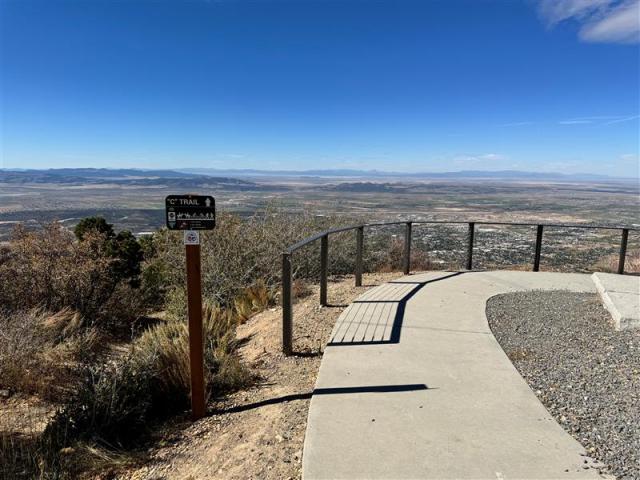
Another site near Cedar City that’s worth exploring is the accessible Three Peaks RC Track, which has three remote-controlled vehicle tracks. A long cement ramp leads to the accessible track stand that overlooks a maze track, oval track, and a kids track. The 6,000-acre Three Peaks Recreation Area also offers camping, disc golf, and multi-use trails, including an equestrian trailhead.
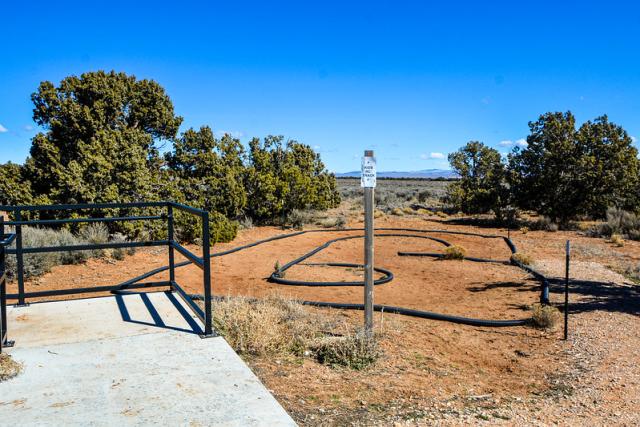
Steeped in history, the Simpson Springs Campground, west of Provo, is on the Pony Express National Historic Trail and was the site of a significant Depression-Era Civilian Conservation Corps camp. This remote campground has running water, restrooms, and all 20 of the campsites have some accessibility features.
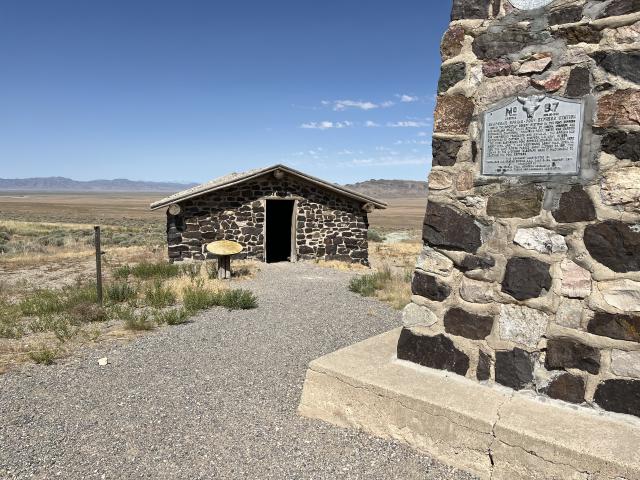
Grosvenor Arch is a perfect destination for visitors looking to experience natural beauty that’s more remote, but still accessible. This site is 18 miles south of Cannonville and is reached after traveling on 11 miles of dirt road. Visitors using mobility devices can get very close to the natural sandstone arch by going up a short-paved pathway.
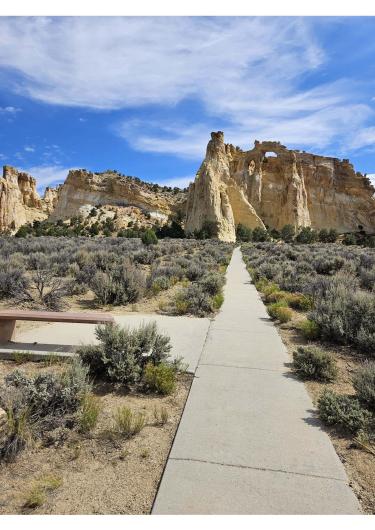
The Hog Springs Recreation Area, which is right off Utah’s Bicentennial Highway Scenic Byway between Hanksville and Blanding, is a picturesque picnic area with a little adventure. Visitors with mobility devices can easily cross a suspension bridge to use the covered picnic tables near the rugged canyon walls, just a short distance from the parking lot.

If camping in groups is more your style, the Horsethief Campground, off Utah State Route 313, a Scenic Byway west of Moab, has 83 individual and 5 group campsites. Group Campsite A has many accessibility features including an elevated tent pad to facilitate transfers from wheelchairs or other mobility devices, shaded picnic tables, access to restrooms, paved pathways, and plenty of parking.
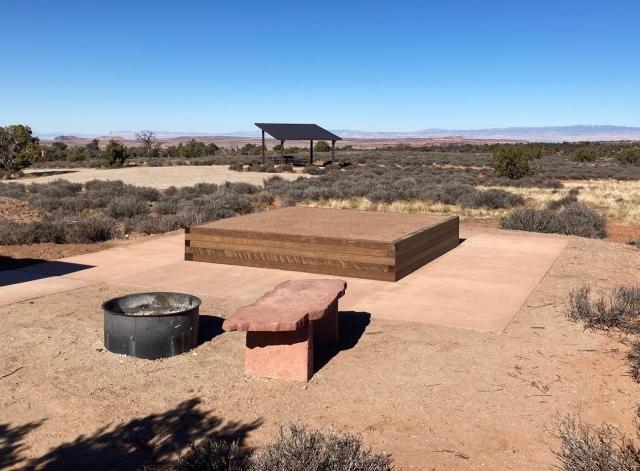
Utah has many sites with cultural significance, including two sites in southern Utah. An improved trail, known as the Tempi’po’op Trail, near St. George, leads up to an Ancient Pueblo farmstead with slopes generally less than 8 percent. A complex of well-preserved Pueblo structures, including a kiva, can be seen on a ¼-mile paved trail at the Mule Canyon Interpretive Site on State Route 95, southwest of Blanding.
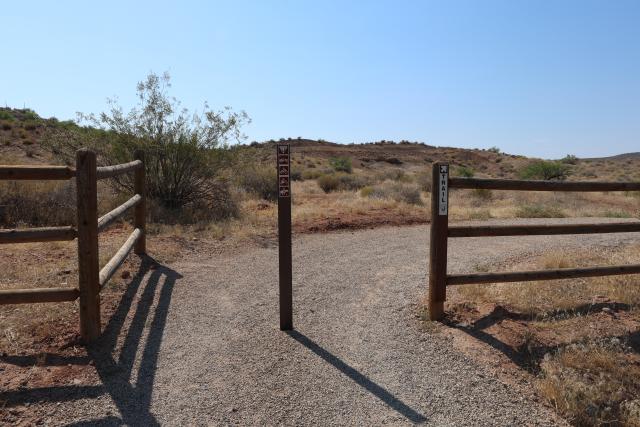
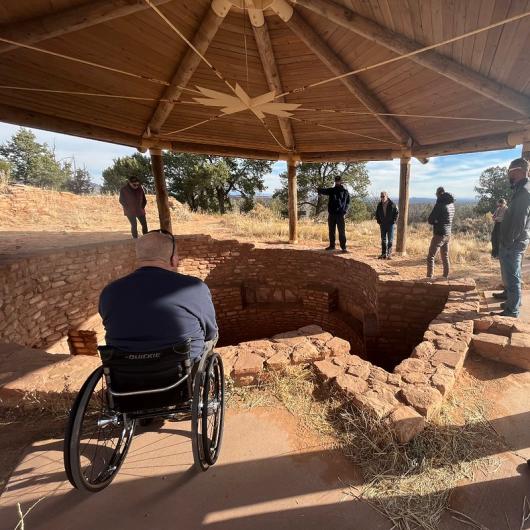
Each of these sites, and many more, can be explored by visitors with disabilities.
BLM Utah Resource Advisory Council member Rick Draney can often be found on public lands. “There are many wonderful recreation opportunities on our public lands,” says Draney, who represents dispersed recreation on the Advisory Council. “I appreciate the BLM’s efforts in providing information that will help individuals with different abilities choose the best recreation opportunities for themselves.” He suggests that accessibility should be part of the conversation when planning new or improved sites. “We can do this by listening to perspectives from people who know firsthand what works best and what is a challenge.”
Evan Glenn agrees. “When we develop or improve a site, we put our ‘accessibility lens’ on and we encourage others to do the same.” He goes on to say, “We need to celebrate our sites that offer accessibility features, even if they aren’t perfect.” Glenn suggests one place to start is by making incremental changes, such as replacing all the picnic tables or all the fire rings with ones that are accessible.
“Sometimes a small change is all it takes to make a big difference,” offers Draney.
Cathy Humphrey, Project Manager, Experienced Services Program
Related Stories
- BLM recreation sites available to all: Exploring accessibility on California’s public lands
- A day on patrol with BLM Arizona Ranger Rocco Jackson
- Overcoming challenges to move the BLM forward: Nikki Haskett
- BLM recreation sites available to all: Exploring accessibility on Arizona’s public lands
- Steer clear of muddy roads and trails this spring
